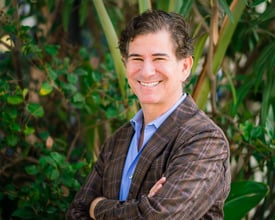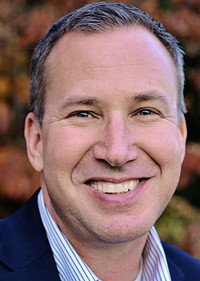How to Build Your Innovation Community
 A key principle at the Alliance is that innovation communities
must focus on the founders’ journey while solutions must remove friction and
obstacles to entrepreneurship and startup growth. In my last post, I mapped the
distinct SoCal innovation communities and discussed the
different community types based on the presence of key stakeholder groups. In
this piece, I turn from where startup activity is concentrated in SoCal
to how these communities can grow.
A key principle at the Alliance is that innovation communities
must focus on the founders’ journey while solutions must remove friction and
obstacles to entrepreneurship and startup growth. In my last post, I mapped the
distinct SoCal innovation communities and discussed the
different community types based on the presence of key stakeholder groups. In
this piece, I turn from where startup activity is concentrated in SoCal
to how these communities can grow.
In collaboration with the Boston Consulting Group (BCG), we interviewed over 60 community members across SoCal innovation stakeholder groups to understand the range of frictions entrepreneurs face. BCG and the Alliance used these insights to build a comprehensive Playbook of solutions to be utilized by SoCal leaders, including “recipe books” tailored to each community type (e.g. “Blossoming”, “Talent Anchor” and “Corporate Anchor”).
To illustrate how our playbook of strategies can be used to address the variety of friction sources for startup growth, I pulled a few quotes from our stakeholder interviews and match them with potential solutions from the Playbook. These solutions are just a taste of the twenty-eight strategies inside the Playbook for Node Activation that the Alliance uses in our consultations with the innovation communities we partner with.
Blossoming Nodes
“As a first-time entrepreneur, my biggest struggle was not knowing what I didn’t know.”
– Founder of startup in El Segundo, CA
Blossoming nodes are communities characterized by a strong start-up culture and rising startup density that have an opportunity to ignite greater success. However, people within and outside these communities do not effectively tap into the full potential of resources due to a lack of awareness and isolation. The Playbook specifies a range of strategies such as an online tool that acts as a directory of resources to help founder’s succeed and scale, including where to find peer support, mentorship, funding sources, and startup talent.
Talent Anchor Nodes
“We need existing business operators. We've thought about working with larger companies that might send people here to be mentors in residence.”
– Professor, Claremont Graduate University
Talent anchor nodes are communities characterized by large universities that produce raw talent and intellectual property that fuel entrepreneurship. These communities experience friction due to a lack of infrastructure, insufficient mentorship, and inadequate funding. Leaders we spoke to in Riverside and Claremont, like the Professor quoted above, identified weak startup and business cultures and expertise on campus to guide new founders. For such communities, one potential solution described in the Playbook is to engage alumni as connectors and mentors and ensure cultural buy-in from faculty who can develop talent and advance scientific breakthroughs that have the potential to be commercialized.
Corporate Anchor Nodes
“We don't want a high quantity of companies – we want to use the smart people around us to have a curated list of companies that are perfect for [us] to talk to.”
- SVP, The Walt Disney Company
Corporate anchor nodes are communities that are characterized by a strong presence of corporations and investors. However, these communities experience friction because of a lack of organized collaboration between the community and government. A potential solution to this friction laid out in the Playbook, and a way to address the SVP’s perspective, is to engage corporations as a source for entrepreneurial mentorship, while also working to cultivate engagement from a breadth of local companies.
Five Key Frictions Facing Entrepreneurs
Reflecting on our field interviews and desk research produced by BCG we found that the majority of frictions entrepreneurs experience cluster around five core themes. These themes include (1) access to capital, (2) isolation, (3) navigating external resources, (4) access to reliable quality talent, and (5) sociology or cultural adaptation to consistent change (see slide below). While entrepreneurs experience these types of frictions everywhere, the frictions are unevenly distributed across communities based on node type and developmental stage of the community. In SoCal the challenges of isolation and navigation are particularly pervasive.
The prioritization of solution initiatives for a given node is based on the predominant frictions identified by that community and the feasibility of implementing that solution. Over time, as communities grow and their needs evolve, so too will the strategies they employ.
Supporting Ecosystem Leaders
At the Alliance, we believe that the key to prioritizing local community needs and implementing solutions is to create a dedicated group of leaders that are nimble enough to spearhead ecosystem development and influential enough to implement solutions with the support of other community stakeholders. We call these leaders “node champions.”
Node champions may be local experienced entrepreneurs, community advocates, investors, government employees, or corporate representatives. The key is that they are passionate about innovation and have a desire to give to the community. These local leaders will also have the unique opportunity to impact and drive regional innovation, receive support from the Alliance, and be candidates for the Node Champion Council that the Alliance is building.
If you are interested in becoming a leader in your community, we are ready and able to support you. If you want to learn more about our approach and our Playbook in order to help your community canvas resources and fill in gaps, empower and leverage key stakeholders, and unlock capital, please reach out to us
Eric Eide is Director of Ecosystem Development at the Alliance for SoCal Innovation. Before joining the Alliance, Eric grew the Government Relations team at startup electric scooter rental company Bird and expanded operations domestically and internationally. Previously, Eric served as Director of International Trade for Los Angeles Mayor Eric Garcetti. Eric also served in the U.S. federal government as an Advisor for Strategic Partnerships at the U.S. Department of State and also represented the U.S. Small Business Administration with the startup community.
 Tony Greenberg
Tony Greenberg
 Ivan Nikkhoo, Managing Partner – Navigate Ventures
Ivan Nikkhoo, Managing Partner – Navigate Ventures Michael Sherman, Neil Elan and Karine Akopchikyan
Michael Sherman, Neil Elan and Karine Akopchikyan Alejandro Guerrero
Alejandro Guerrero Kevin DeBre
Kevin DeBre Braven Greenelsh
Braven Greenelsh Rob Freelen, Los Angeles Market Manager, Silicon Valley Bank
Rob Freelen, Los Angeles Market Manager, Silicon Valley Bank Braven Greenelsh
Braven Greenelsh Kaäre Wagner, Silicon Valley Bank
Kaäre Wagner, Silicon Valley Bank Al Guerrero, Silicon Valley Bank
Al Guerrero, Silicon Valley Bank Rob Freelen, Los Angeles Market Manager, Silicon Valley Bank
Rob Freelen, Los Angeles Market Manager, Silicon Valley Bank Sid Mohasseb
Sid Mohasseb William Hsu
William Hsu Braven Greenelsh
Braven Greenelsh Dinesh Ravishanker
Dinesh Ravishanker Dina Lozosfky
Dina Lozosfky Melinda Moore
Melinda Moore Ivan Nikhoo
Ivan Nikhoo Jaspar Weir
Jaspar Weir Erik Caso
Erik Caso Tracy Olmstead Williams
Tracy Olmstead Williams Dave Berkus
Dave Berkus Bernard Luthi
Bernard Luthi Peter Cowen
Peter Cowen Nick Hedges
Nick Hedges Eric Larsen
Eric Larsen Michael Terpin
Michael Terpin Steve Reich
Steve Reich